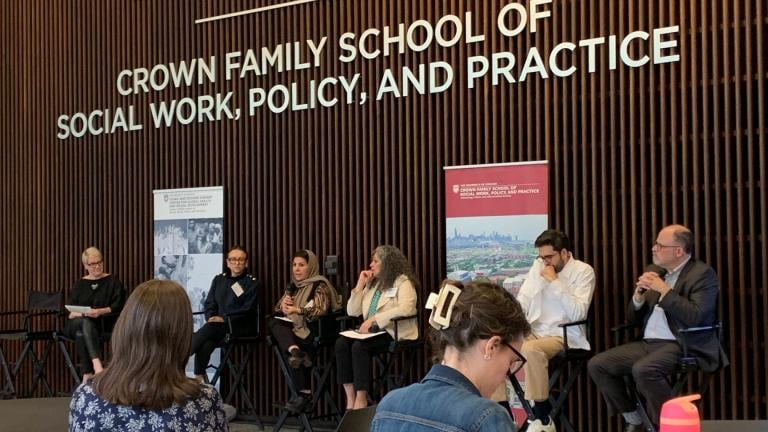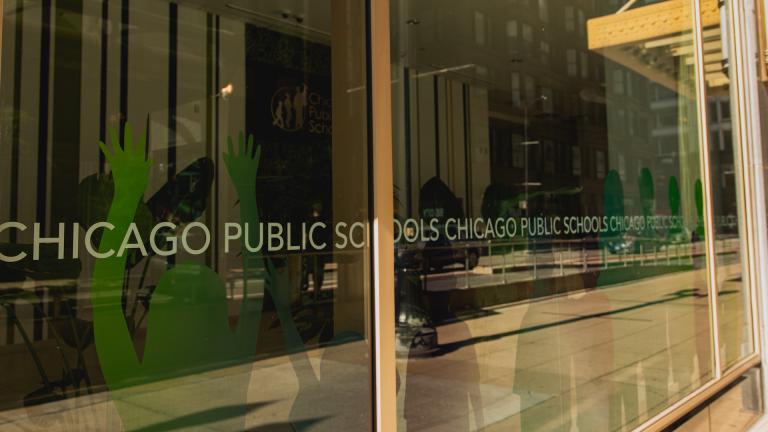In Chicago and northeastern Illinois, ash trees are everywhere. And wherever there are ash trees, there's a good chance there are emerald ash borers (EAB). Despite their green color, these beetles are not good for the environment. They are, in fact, responsible for the destruction of the ash trees that comprise an estimated 20 percent of Chicago’s street trees.
The EAB is native to Asia, but in June 2002, EABs were spotted in Michigan, their first appearance in the U.S. Six years later, an EAB infestation was confirmed at 29th and State Street in Chicago. Since then, the Illinois Department of Agriculture (IDA) has issued an eight-mile quarantine around areas with known EABs.
Some scientists project that in about 10 years, the EAB will have destroyed all the ash trees in the area. However, officials remain optimistic.
“When you are dealing with an invasive species that establishes itself over such a broad area, it takes a team effort to address it effectively,” said Matt Smith, Chief Spokesperson for the Chicago Department of Streets & Sanitation, of which the Bureau of Forestry is a part. “We helped build such a team with our Federal and State allies when we dealt with the invasion of the Asian Longhorned Beetle (ALB). In the end, we were able to eradicate the ALB. While we are still fighting EAB and watching for new invasive insects, we will continue to use the existing line of communications to coordinate efforts against future invaders.”
There are approximately 92,000 ash trees in Chicago’s public way, according to the Streets & Sanitation Department, as well as an estimated 400,000 on private property.
“The real impact is in our communities,” said Paul Deizman, Forest Management Programs Administrator of the Illinois Forestry Division. “There will be communities that lose 60 to 70 percent of their street trees. Those are the trees that are going to have an impact on our environment—urban storm runoff, overheating of cars, too much sun in everyone’s yard.”
There are three main approaches to the problem: chemical agents, bio-controls and tree replacement. Since 2009, the Streets & Sanitation Department has been applying the insecticide TREE-äge to ash trees. TREE-äge is 99 percent effective and it’s the best method for protecting individual trees. However, the treatment must be renewed every three years.
On a larger scale, the Streets & Sanitation Department has been working with the U.S. Department of Agriculture, among others, on various bio-controls, or natural predators of the EAB. Specifically, they have been studying three wasp parasitoids: Spathius agrili, Tetrastichus planipennisi, and Oobius agrili. These bio-controls are not without their risks.
“Most of the time, when we tinker with nature it doesn’t go very well,” said Edith Makra, Community Trees Advocate at The Morton Arboretum. “The criticism is that if this natural predator is brought in, how do we know it won’t escape and kill a desired species?”
However, all three parasitoids appear to affect only the EAB. Officials began releasing them in small increments in 2009, and they are planning an ongoing release of approximately 7,500 more this summer. That might sound like a lot, but these tiny, non-stinging wasps range from the size of a small ant to ¼ the size of a poppy seed.
Long term, many ash trees need to be slowly phased out and replaced with a variety of trees in order to prevent a similar situation. “In the future, such trees could include different varieties of ash trees, or hybrids, that might prove resistant to the EAB,” said Smith. “Right now there is research underway at institutions like The Morton Arboretum to grow and test such different varieties.”
Symptoms of EAB infestation include crown dieback, in which branches at the top of the tree die, and vertically split barks. Another sign of infestation is the distinctive exit hole—“D” shaped with a 1/8 inch diameter—left by EABs as they exit the tree. These holes can occur anywhere on the trunk or upper branches.
To prevent the EAB from spreading further, it’s important not to transport firewood. Instead, burn it where it has been found.
“It’s good firewood, but the worst thing to do is to move it,” said Deizman. “We do not want to see the accordion expand and we don’t want to give it to any other state any faster than they are going to get it naturally.”
There are other uses for ash trees affected by the EAB. The Illinois Emerald Ash Borer Wood Utilization Team works to gather and use affected ash trees in wood products ranging from baseball bats to cabinetry.
“Ash is actually a very good wood,” said Makra. “It has a lot of properties like oak, and it’s very strong and shock absorbent.”
The EAB does not damage the wood of the tree it kills so the affected wood can be safely transformed into lumber. Although it’s impossible to reverse the damage, these products present a beautiful and practical way to reclaim the trees that the EAB has destroyed.











